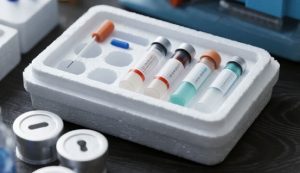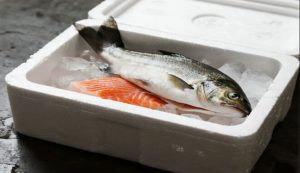How EPS Foam is Revolutionizing Cold Chain Logistics?
In today’s globalized world, the safe transportation of temperature-sensitive goods such as frozen products, fresh foods, vaccines, and pharmaceuticals has never been more critical. Cold chain logistics, which ensures these fragile items are shipped and stored at consistent temperatures, faces growing challenges due to rising global demand.
This is where Expanded Polystyrene (EPS) foam steps in as an innovative cold chain solution. Combining superior insulation with sustainability, EPS foam is transforming the logistics landscape for perishable goods and medical supplies, aligning perfectly with both 2025 industry trends and eco-friendly objectives.

Cold chain logistics maintains products at their ideal conditions from origin to destination—ensuring freshness and extended shelf life for perishable goods, while preserving the efficacy of vaccines, biologics, and specialty pharmaceuticals. The stakes are high: even a brief temperature deviation can compromise an entire batch of life-saving drugs or spoil vast quantities of agricultural produce.
The global need for cold chain logistics is soaring. Industry reports predict the market will grow at a CAGR of 10.7% through 2030, driven by:
- Increasing vaccine distribution needs, especially in developing areas.
- Rising consumer desire for fresh, natural produce all year.
- Growth of biologics and specialty medicines requiring strict temperature control.

However, issues like uneven cooling, long travel times, and high expenses threaten cold chain reliability. EPS foam tackles these problems with impressive efficiency. EPS foam shines as a top material for cold chain packaging due to its special qualities. Let’s explore why it’s the preferred choice for food and medicine logistics.
Superior Insulation and Thermal Efficiency
EPS foam is a closed-cell structure that holds air, forming an excellent heat barrier. This maintains steady temperatures throughout transport, even when shipping in extreme temperatures. For instance, EPS boxes can maintain sub-zero temperatures for vaccines or keep fruits fresh for days without refrigeration.
| Material | Thermal Conductivity (W/m·K) | Insulation Effectiveness |
| EPS Foam | 0.03–0.04 | Excellent |
| Cardboard | 0.05–0.08 | Fair |
| Non-Insulated Plastic | 0.15–0.25 | Poor |
Compared to cardboard or non-insulated plastics, EPS foam provides better heat protection, lowering the chance of temperature errors and meeting strict rules.The cold chain industry is changing quickly, and EPS foam is central to these shifts.






